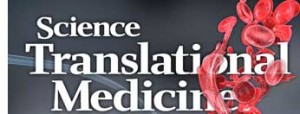Cooperativity of HIV-Specific Cytolytic CD4 T Cells and CD8 T Cells in Control of HIV Viremia.
Johnson S, Eller M, Teigler JE, Maloveste SM, Schultz BT, Soghoian DZ, Lu R, Oster AF, Chenine AL, Alter G, Dittmer U, Marovich M, Robb ML, Michael NL, Bolton D, Streeck H. J Virol. 2015 Aug 1;89(15):7494-505.
CD4(+) T cells play a pivotal role in the control of chronic viral infections. Recently, nontraditional CD4(+) T cell functions beyond helper effects have been described, and a role for cytolytic CD4(+) T cells in the control of HIV infection has been suggested. We define here the transcriptional, phenotypic, and functional profiles of HIV-specific cytolytic CD4(+) T cells. Fluidigm BioMark and multiparameter flow cytometric analysis of HIV-specific cytolytic CD4(+) T cells revealed a distinct transcriptional signature compared to Th1 CD4(+) cells but shared similar features with HIV-specific cytolytic CD8(+) T cells. Furthermore, HIV-specific cytolytic CD4(+) T cells showed comparable killing activity relative to HIV-specific CD8(+) T cells and worked cooperatively in the elimination of virally infected cells. Interestingly, we found that cytolytic CD4(+) T cells emerge early during acute HIV infection and tightly follow acute viral load trajectory. This emergence was associated to the early viral set point, suggesting an involvement in early control, in spite of CD4 T cell susceptibility to HIV infection. Our data suggest cytolytic CD4(+) T cells as an independent subset distinct from Th1 cells that show combined activity with CD8(+) T cells in the long-term control of HIV infection.
HIV-specific cytolytic CD4 T cell responses during acute HIV infection predict disease outcome.
Soghoian DZ, Jessen H, Flanders M, Sierra-Davidson K, Cutler S, Pertel T, Ranasinghe S, Lindqvist M, Davis I, Lane K, Rychert J, Rosenberg ES, Piechocka-Trocha A, Brass AL, Brenchley JM, Walker BD, Streeck H. Sci Transl Med. 2012 Feb 29;4(123):123ra25.
Early immunological events during acute HIV infection are thought to fundamentally influence long-term disease outcome. Whereas the contribution of HIV-specific CD8 T cell responses to early viral control is well established, the role of HIV-specific CD4 T cell responses in the control of viral replication after acute infection is unknown. A growing body of evidence suggests that CD4 T cells-besides their helper function-have the capacity to directly recognize and kill virally infected cells. In a longitudinal study of a cohort of individuals acutely infected with HIV, we observed that subjects able to spontaneously control HIV replication in the absence of antiretroviral therapy showed a significant expansion of HIV-specific CD4 T cell responses-but not CD8 T cell responses-compared to subjects who progressed to a high viral set point (P = 0.038). Markedly, this expansion occurred before differences in viral load or CD4 T cell count and was characterized by robust cytolytic activity and expression of a distinct profile of perforin and granzymes at the earliest time point. Kaplan-Meier analysis revealed that the emergence of granzyme A(+) HIV-specific CD4 T cell responses at baseline was highly predictive of slower disease progression and clinical outcome (average days to CD4 T cell count <350/μl was 575 versus 306, P = 0.001). These data demonstrate that HIV-specific CD4 T cell responses can be used during the earliest phase of HIV infection as an immunological predictor of subsequent viral set point and disease outcome. Moreover, these data suggest that expansion of granzyme A(+) HIV-specific cytolytic CD4 T cell responses early during acute HIV infection contributes substantially to the control of viral replication.


